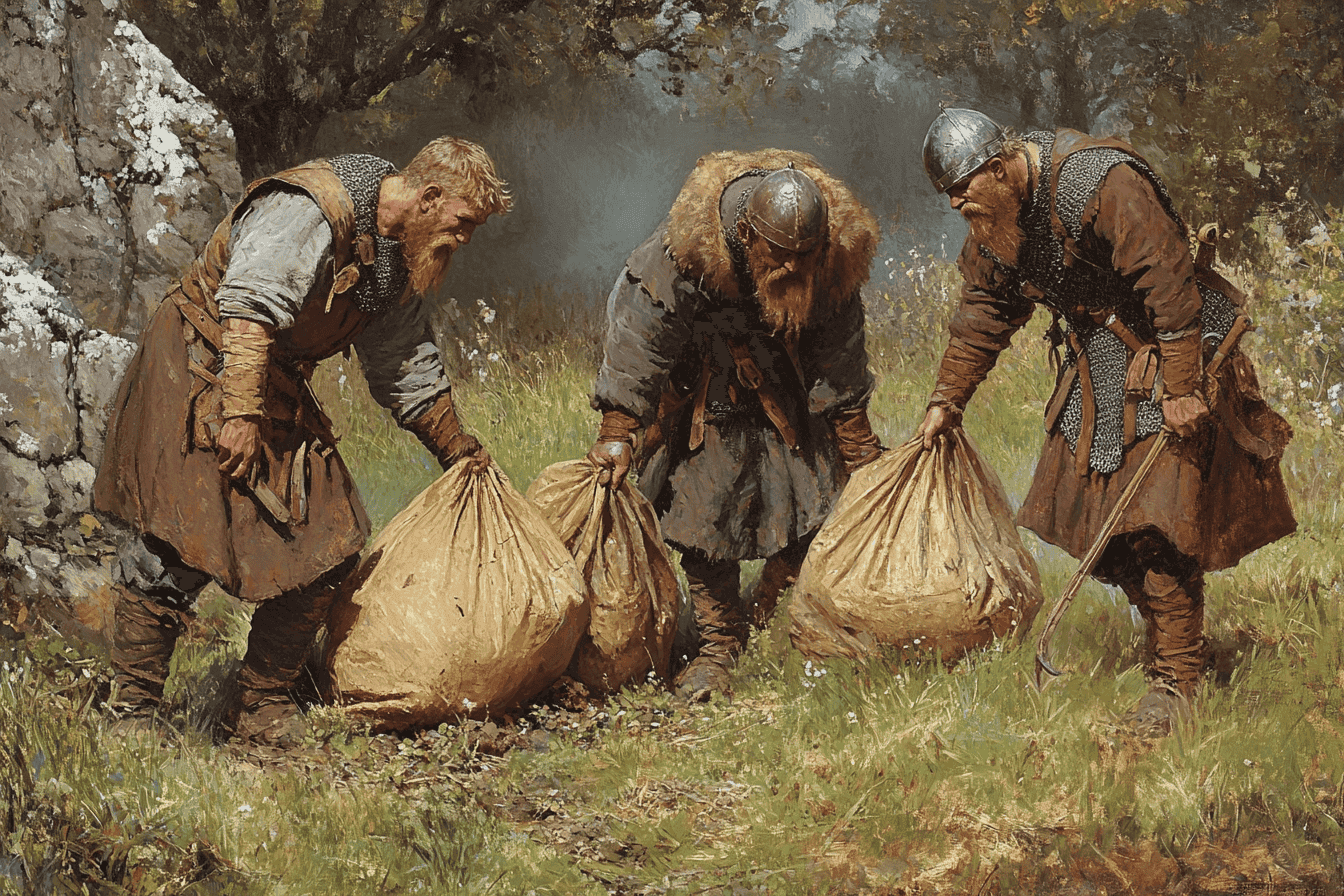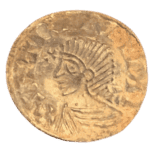
The Staffordshire Hoard is the largest hoard of Anglo-Saxon gold and silver metalwork ever found. It consists of almost 4,600 items and metal fragments, amounting to a total of 5.1 kg (11 lb) of gold, 1.4 kg (3 lb) of silver and some 3,500 pieces of garnet jewellery.
On July 5, 2009, Terry Herbert, a member of a local metal detecting club, discovered gold artefacts while searching recently ploughed farmland near Hammerwich, Staffordshire in England. Over the following five days, a total of 244 gold objects were recovered from the site.
Why was the hoard buried?

The horde was buried within the Anglo-Saxon kingdom of Mercia around 650-675 CE – a key time in the history of both Mercia and England. King Penda, had increased Mercia’s power through alliance and competition with its neighbours: many of the hoard objects probably originated in the workshops of those neighbours, perhaps carried to Mercia over many campaigns and through many political acts, such as marriage, other political alliances, fealty and over-lordship, giving and taking of tribute.
When he was slain in battle in AD 655 CE, Penda was the last major surviving pagan Anglo-Saxon king, Christianity having swept across England in the preceding half-century during which most of the objects were made. The hoard objects thus represent, in physical form, the artistic traditions and ideas of a period of profound political and religious change across England, and their burial coincides with the turbulent time of struggle within Mercia that followed Penda’s death. Why they were buried, we can’t be sure.
Composition of the Hoard
The hoard primarily consists of military items, with a notable absence of domestic objects or feminine jewelry. The majority of the artifacts are parts of larger objects that were deliberately broken up or dismantled before burial such as precious metal fittings from elite weapons. In fact, the horde contains: 71 sword hilt collars, 136 sword hilt plates and 84 sword pommels. These items showcase the exceptional craftsmanship of 7th-century Anglo-Saxon metalsmiths.
The Helmet
One of the most significant discoveries within the hoard is the remains of a high-status helmet. While found in fragments, experts have reconstructed what this impressive piece might have looked like. The helmet features: cheekpiece-shaped items, Thousands of die-impressed silver sheet fragments, many originally gilded, panels depicting warriors, priests and horsemen, as well as, zoomorphic designs. This helmet reconstruction provides a tangible representation of the hoard’s prestigious nature.
Religious Objects
Despite the predominantly martial character of the hoard, it also contains several religious items: a gold pectoral cross, possibly worn by a high-status cleric, jeweled altar cross, the arm of another cross with a Latin biblical inscription and precious metal and garnet fittings likely from religious books and reliquaries. These objects offer unique insights into the material culture of the early Christian Church in Anglo-Saxon England.
Materials
The majority of the objects are made of high-quality gold, which has helped preserve the intricate details and designs. The gold contains small amounts of copper, silver, and platinum impurities, affecting the color and tarnishing of the objects over time. Approximately 150 objects in the hoard are made from silver, with all but one originally gilded to appear gold. The silver items have become brittle over time due to their instability. Many objects feature intricate inlays using garnet which was sourced from very distant Afghanistan and India, so was probably obtained by removing the stones from Roman metalwork.
Importance
With more than 100 weapons, mostly swords, represented in the hoard, part of its importance obviously lies in its size. A cache of weapon parts of this scale has changed historians’ ideas about the nature of Anglo-Saxon armies and their weaponry, prompting questions about the size of armies and the proportion of elite warriors armed with swords in them.
However, the character of the objects making up this large hoard is also significant. The weapon fittings include many sets of matching fittings, decorated with tiny animal motifs or repeating interlace and swirling patterns. Prior to the discovery of the hoard, there were very few examples of similar sword hilt sets: the collection has therefore changed perceptions of weaponry and patronage in the Anglo-Saxon era.




